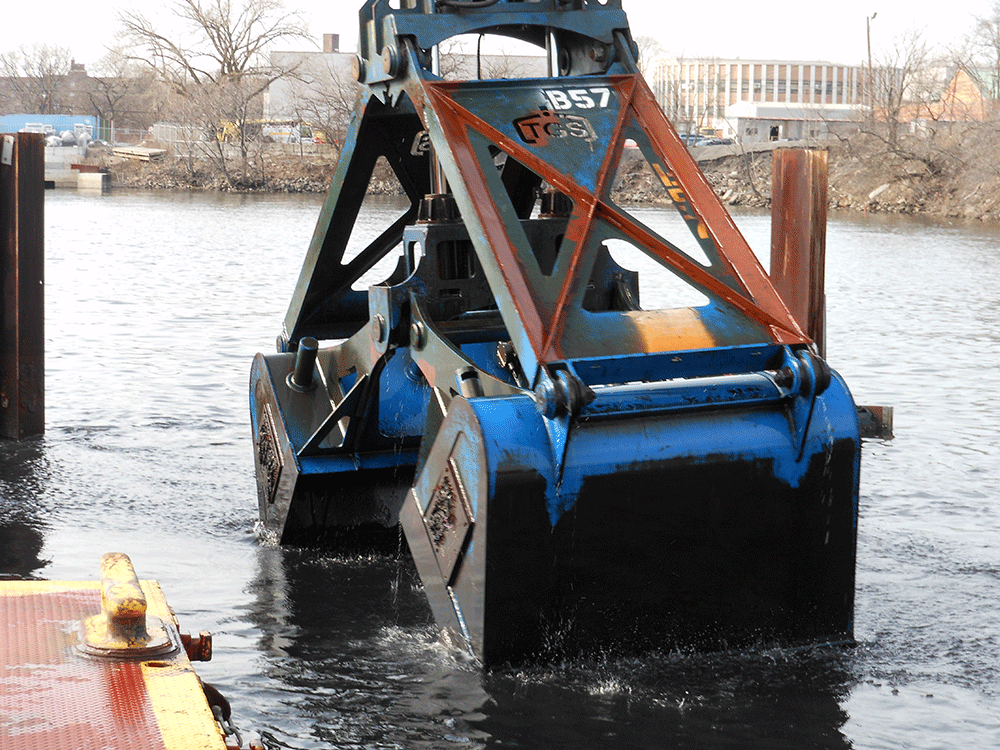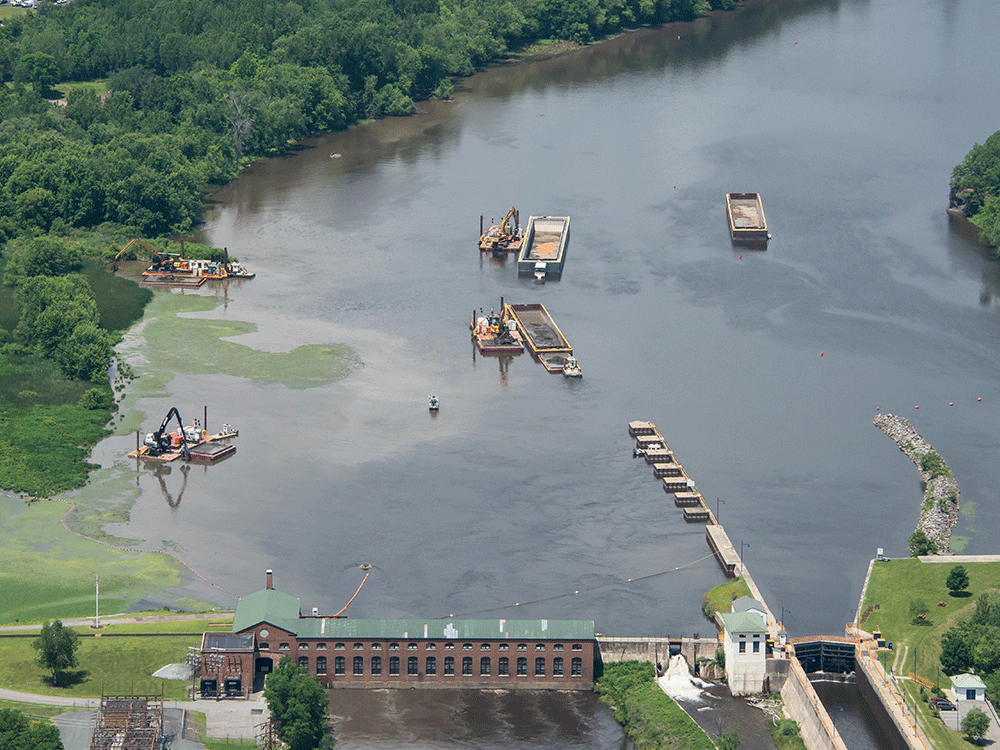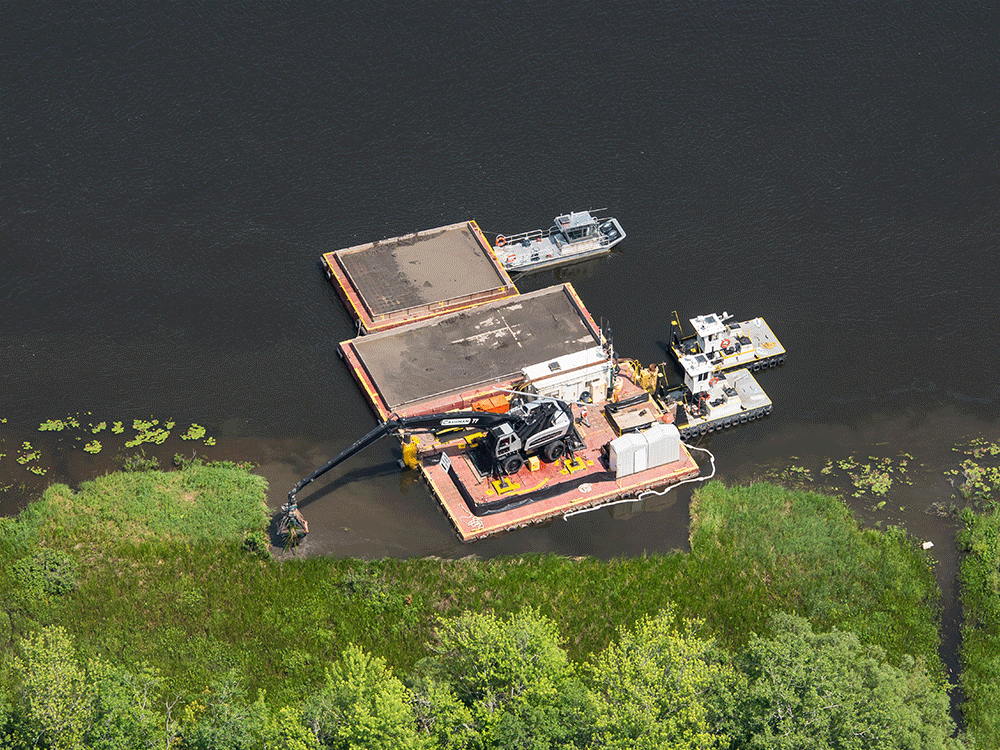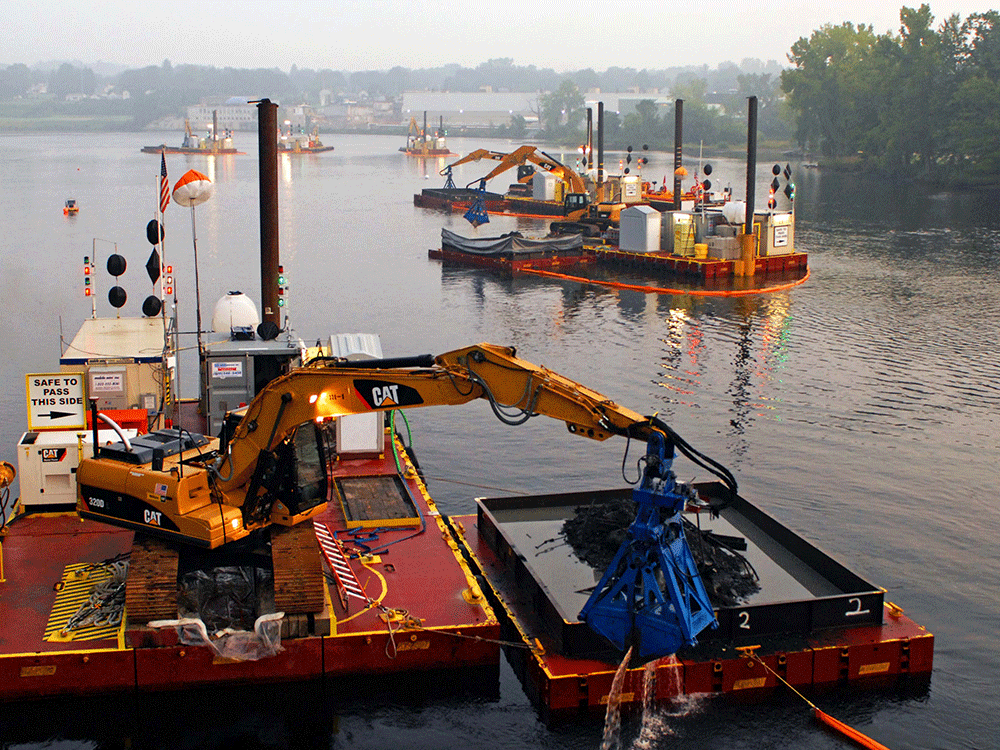Dredge Bucket-Positioning System
We refined and improved our dredge bucket-positioning system (DBPS) to minimize over-dredging.
CASHMAN worked directly with Hypack, Inc. to customize sophisticated dredge guidance software, so that only targeted material would be removed. Additionally, CASHMAN and Hypack devised an intricate bucket pattern driver that controls bucket placement and bucket overlap. CASHMAN has successfully utilized the DBPS to ensure that we maintain stringent dredging tolerances on multiple projects, most notably the Hudson River Sediment Remediation Project—the largest environmental remediation dredging project in U.S. history.
The system provides real-time information on bucket position to assist the operator in accurately controlling the bucket. Custom software drivers within the DBPS aid the operator in placing the bucket to the predefined target location within the dredging tolerance (horizontally & vertically), where the grab is made. The operator views each of the proposed bucket grabs (targets) on the dredge guidance screen. The bucket targets are based on offset information from the center of the bucket to the proposed target elevation. The operator’s plan view screen is a color-coded 3-D terrain model (matrix) of the basin bottom. The matrix colors are referenced to the thickness of material remaining above (and below) the targeted elevation. Once a grab has been made, the color matrix is automatically updated in the DBPS using the elevation of the bucket at grab closure. The operator continues to dredge bucket targets until the matrix shows that all available material above grade has been removed.
Over-dredging below the dredge design is limited and in most cases eliminated by employing a proprietary electronic relay incorporated into the excavator’s bucket-closing circuit. This relay is activated by the DBPS if the operator lowers the cutting edge of the bucket below the "target grade." Once activated, the relay disables the operator’s ability to close the bucket until the bucket’s cutting edge is raised above the target elevation. CASHMAN has also programmed state-of-the-art logic within the DBPS in order to minimize stair-stepping and over-dredging of material below grade on slopes. This is especially efficient and necessary for use with varying bathymetry and contour dredging. For example, a slope offset override has been inserted into the code in CASHMAN'S DBPS. This utility calculates the vertical elevation of the four corners of the bucket and compares these elevations to the dredge design elevation at those corresponding positions. This driver will act to limit the size (or depth) of the steps in a side slope. If this comparison yields a number in excess of the predefined allowable tolerance below the design dredge grade, the bucket relay is triggered and the operator is not permitted to take the grab. The operator then readjusts the bucket position by raising the offending corner that is over-dredging and is allowed to take the grab.






